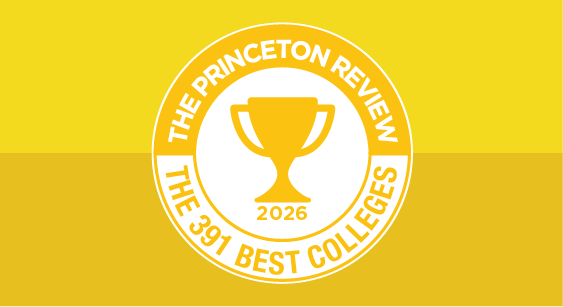
By Rob Franek, Editor-in-Chief, William H. Floyd, and the staff of The Princeton Review
Click here to watch Rob’s video regarding the new digital SAT on The Princeton Review’s YouTube channel.
Big news, folks. The SAT is going digital! The College Board announced that its signature exam would soon be fully digital. Beginning in spring 2024 across America, and spring 2023 for international students, SAT takers will take the test on a computer. The College Board promises the test will still measure the same things, be scored on a 1600 scale, and be taken at testing centers or in schools. However, the new digital test will be adaptive, streamlined to two hours from the current three, and students can take it on a laptop or tablet, including their own devices. So, what does all that mean?
For current seniors, juniors, or sophomores (in the U.S.), not much. The new SAT won’t be available until spring 2024, making the high school class of 2025 the first group to take the digital version. The College Board notes the first digital PSAT ® will be available in fall 2023, and will be the National Merit Scholarship Qualifying Test ® for the Class of 2025. Juniors and Sophomores in the U.S. planning for the college application process right now will be taking the SAT as it is currently administered.
As you may know, many colleges and universities have become test-optional due to COVID’s impact. Harvard made news in December 2021 for extending their test-optional policy for four more years—only the number of years was exceptional about Harvard’s announcement. Stanford announced a one-year extension of its policy in November 2021, as well. The University of California and California State University systems announced a permanent test-free policy around the same time. And recently, the Iowa Board of Regents announced all three state universities in Iowa are permanently test-optional. And while the expansion of the test-optional policy may continue, the trajectory doesn’t seem to be on a linear path. According to The Princeton Review Summer 2021 College Administrator Survey , 87% of schools were test-optional for fall 2021, but for fall 2022 admissions, that number dropped to 78%. It’s important to remember that test-optional doesn’t mean test-blind. In fact, of the 300 schools we surveyed nationwide, all of them said that they would still consider standardized test scores as part of the application process if submitted.
As always, our job at The Princeton Review is to give you the most up-to-date information as we receive it, so here is what we know so far about the new testing format and procedures.
The digital SAT exam will be computer adaptive.
Essentially put, students will each get an SAT that is customized to their performance. The better they do on the first section, the harder the questions they'll get for the second—but also the more points each one will be worth. (There's still no penalty for guessing, but it behooves you to answer as accurately as possible on that first section so that you can maximize your opportunities on the second.)
The test will be shorter.
Testing fatigue is real, and we know that it's tough to stay focused for three hours. Well, your dreams have been answered: the new version of the test will be closer to two-ish hours. Less time will be needed overall for exam setup and time-consuming preamble, currently done by an in-person SAT monitor. In addition, the new exam will have shorter reading passages and more direct questions.
Calculator use is expanded, and you can bring your own.
In fact, the "no calculator" portion of the test is being removed. And all students will have access to a built-in graphic calculator (though they can still bring their own).
Computers will be provided.
Don’t worry if you don’t have your own computer. On test days, students will be able to bring their own computers or their own tablets if they choose, or they can use those provided directly at the testing center.
As more information becomes available, we will provide updates on our website and on our YouTube channel.
Please note: Students with special accommodations will be exempt.
Explore Colleges For You
Connect with our featured colleges to find schools that both match your interests and are looking for students like you.
Get Started on Athletic Scholarships & Recruiting!
Join athletes who were discovered, recruited & often received scholarships after connecting with NCSA's 42,000 strong network of coaches.
Best 391 Colleges
170,000 students rate everything from their professors to their campus social scene.



